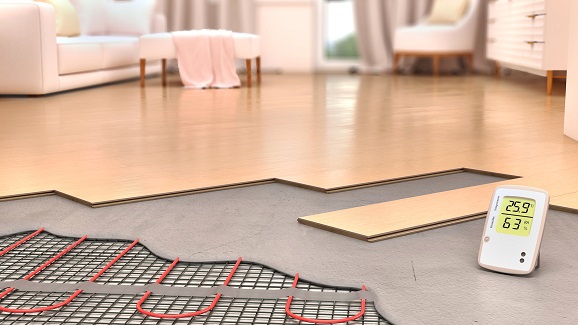
Plumbers
Search

Plumbers
Search

Underfloor heating is one household luxury that’s proving particularly popular. Whilst summer means lower heating usage, as the autumn and winter months roll in, no one can deny the comfort of underfloor heating.
With rising energy prices headline news however, you’ll have many questions about the cost of underfloor heating. Here we take a closer look at the facts and figures of underfloor heating, including installation and running costs.
The installation of underfloor heating unlocks several benefits, especially when compared with traditional radiators. With underfloor heating, you’ll enjoy a better underfoot experience, a fact that makes it a godsend come the cooler months. The absence of visible radiators also means they’ll be more space available in your home, with rooms heated underfloor generally more aesthetically pleasing.
Underfloor heaters require very little maintenance once the initial installation has been completed. Whilst the higher level of control provided by underfloor heating means rooms can be heated individually to reduce energy wastage further.
One disadvantage of underfloor heating is the initial cost of installation. There’s no denying that the cost of underfloor heating is more expensive than the fitting of traditional radiators.
Underfloor heating systems require many more parts. The installation process itself is also more time consuming. Whilst installation costs vary depending on the size of the project, your choice of underfloor heating system makes a difference too. Wet or water underfloor heating systems have higher upfront costs, whereas dry or electrically powered systems offer better affordability.
The cost of installation will also vary if you are having your underfloor heating system fitted in a new build home or retrofitted as part of a refurbishment.
Whilst wet systems have a higher upfront cost, they use far less energy and are much cheaper to run than dry systems. On average, dry systems cost three times more to run than wet systems.
The wet systems our plumbers specialise in boast lower energy costs, making them affordable to run for the long term even when compared with traditional radiators. Overall, they are at least 25% more energy efficient than radiators, and this efficiency is even higher (up to 40% more energy efficient) when used in conjunction with a heat pump.
Make your heating system more energy efficient just in time for autumn by using our handy tool to find a local plumber for underfloor heating installation today.